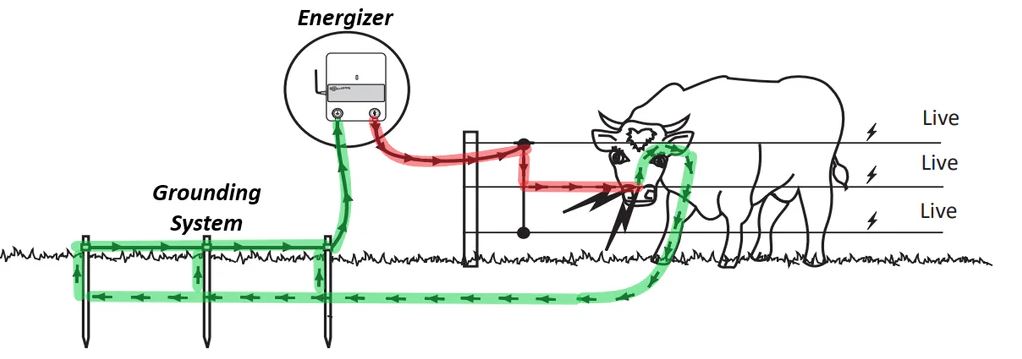 |
Single Wire Layout (above)
The example above shows a single wire configuration. An animal must make contact with one positive wire and the electric circuit is then completed through the soil back to the fence energizer, generating a shock.
This configuration is the most common when installing an electric fence.
You can run as many positive wires through your fence as you like, keeping in mind the capacity of your electric fence energiser.
This set up is suitable for areas that don’t have particularly dry or sandy soil.
Ensure the ground rod is at least 80cm into the ground.
|
| |
| |
Double Wire Layout
An animal must make contact with one positive wire and the electric circuit is then completed through the soil back to the earth rod, generating a shock.
This configuration is generally used when there is a lack of ground moisture in the area your electric fence is installed, reducing the effectiveness of the grounding rod.
It is still recommended that the grounding rod is inserted at least 80cm into the ground when using the double wire configuration.
|
Electric Fence Insulators
|
|
|
Electric Fencing Polywire & Polytape
|
|
|
Solar Electric Fence Energizer
|
| 5-8km Electric Fence Energizer - View |
Pack of 10 Electric Fence Signs - View |
| |








